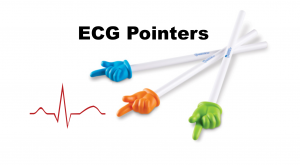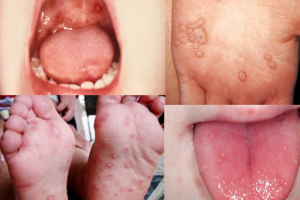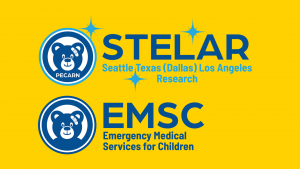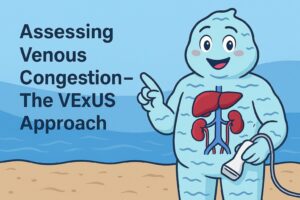Today on the emDOCs cast with Brit Long, MD (@long_brit) and Skyler Lentz, MD (@SkylerLentz), we cover managing the ventilator in the ED setting.
Episode 48: Ventilator Management
Background:
- Managing the ventilator and ensuring appropriate settings are vital; these have a significant impact on patient outcomes.
- LOV-ED Trial: Quasi-experimental, before-after study, evaluating a multifaceted ED-based mechanical ventilator protocol. This targeted lung-protective tidal volume, appropriate setting of positive end-expiratory pressure, rapid oxygen weaning, and head-of-bed elevation.
- Authors found increased ventilator-free days, ICU-free days, and hospital-free days with protocol.
- The mortality rate was 34.1% in the preintervention group and 19.6% in the intervention group with the protocol (adjusted OR 0.47; 95% CI 0.35 to 0.63).
- Fuller BM, Ferguson IT, Mohr NM, Drewry AM, Palmer C, Wessman BT, Ablordeppey E, Keeperman J, Stephens RJ, Briscoe CC, Kolomiets AA, Hotchkiss RS, Kollef MH. Lung-Protective Ventilation Initiated in the Emergency Department (LOV-ED): A Quasi-Experimental, Before-After Trial. Ann Emerg Med. 2017 Sep;70(3):406-418.e4
Goals:
- Utilize appropriate tidal volume
- Limit and measure plateau pressure
- Set appropriate PEEP
- Avoid hyperoxia, ventilate appropriately
- Head of bed up, OG to decompress stomach and decrease aspiration
- Appropriate analgesia and sedation
Settings:
- Tidal Volume
- Tidal volume 6-8 ml/kg IDEAL body weight
- Modes: Volume vs. pressure (most In ED use volume, which gives a guaranteed volume).
- Assist control vs. SIMV – pick a setting that allows set volume and respiratory rate (RR).
- Respiratory Rate
- 10 to 30 breaths per minute (depends on underlying etiology)
- Lower RR for obstructive lung disease (permissive hypercapnia) and higher RR for metabolic acidosis (compensation to blow off CO2).
- Effects minute ventilation and expiratory time.
- Watch for air trapping in obstructive lung disease.
- PEEP
- 5 cm H20 for most
- Obese or severely hypoxemic from ARDS (bilateral infiltrates) need more start at 8-10 cm H2O
- FiO2
- Avoid hyperoxia – reduce FiO2 as soon as feasible and safe.
- Pressures
- Peak pressure goal < 30-35 cm H20
- This is the sum of all pressures in volume targeted modes, includes airway resistance.
- Plateau pressure goal < 30 cm H2O
- This is the pressures in the small airways and alveoli; what we are primarily concerned with.
- Measure with end-inspiratory hold
- Alarms:
- High peak and normal plateau – resistance problem
- High peak and high plateau – compliance problem
- Peak pressure goal < 30-35 cm H20
Putting it all together:
- Acute lung injury/ARDS-bilateral infiltrates
- Problem: Injured alveoli cannot accept volume and exchange oxygen as well as healthy alveoli
- Higher PEEP, plateau < 30 cm H20, Vt 4-6 ml/kg
- Obstructive lung disease
- Problem: Obstruction and limitations in exhalation.
- Lower RR, monitor for air trapping, permissive hypercapnea/pH 7.2 is ok









2 thoughts on “emDOCs Podcast: Episode 48 – Ventilator Management”
Interesting and very helpful
Easy to digest and simple for ED staff. Thanks